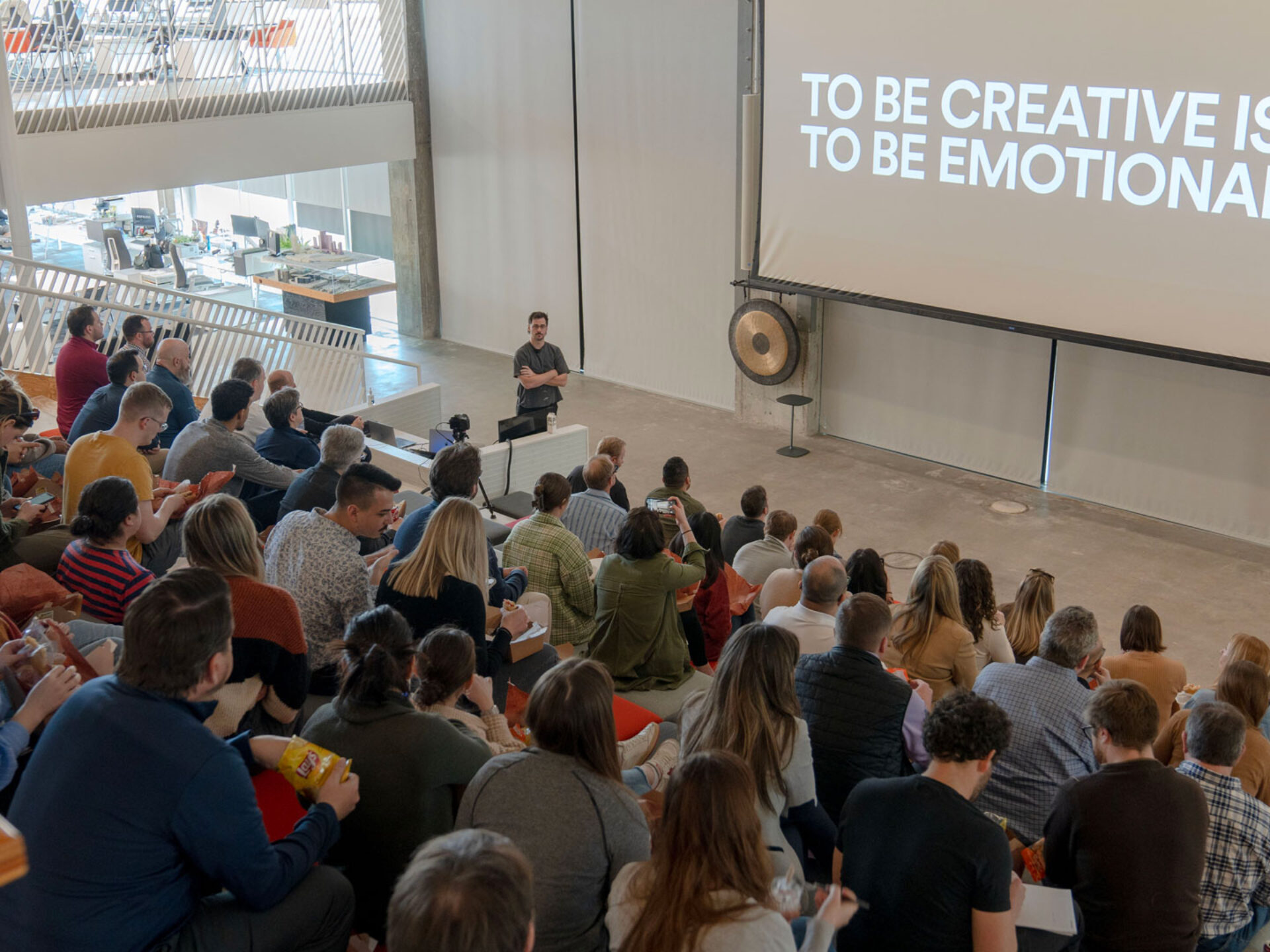Perspectives

December 15, 2022
July 24, 2023

Creativity cannot exist within a vacuum. We hold the value of collaboration incredibly high at Populous because it makes us all better creatives and more thoughtful people.
James Bailey is no stranger to creative collaboration. A dynamic thinker with a significant presence as a creative director working with some of the biggest names in the music industry, Bailey views the world through an innovative lens.
Brian Mirakian, senior principal at Populous, first met Bailey at an industry event in Los Angeles in 2022. Brian was speaking on placemaking and the future of entertainment venues as we know them. At this event, Bailey and Brian realized their respective universes collided in one key way: world building within the entertainment industry. While Brian designs performance venues, Bailey designs the performances themselves. Collaborating with the most future-thinking creatives among us plays a pivotal role in moving the needle toward the next generation of live entertainment spaces.
Bailey visited Populous at our America’s headquarters to talk about the future of the entertainment industry. Then, Brian and Bailey dove into this conversation about the intersection of design and entertainment:
Q: As a creative director, storytelling is at the core of your work. Can you tell us about storytelling and how you view the narrative space?
A: Storytelling and narrative is a core function in my practice, since my work is hoping to create a universe that people can enter. Through creative exposition, design choices and applications, I help guide viewers into a world with an understanding of the complexities it involves. Applying this approach of narrative and storytelling to a physical space is very interesting to me because of the tangible cues required to guide a sports fan or moviegoer, for example, when entering a space to perform an act of community and ritual.
Q: We use the words ‘world building’ frequently in design. What is your definition of world building?
A: My work within music really is all about world building. Specific to the industry, world building is defining all the tangible information you could or should run into. There are pillars of a musical campaign you can refer to as these tent poles: merchandise, album packaging, music videos, social media presence, live shows, styling and more. I have to imagine how all of these things can exist in one room together. This is the space and the world you operate in, and you have to ensure everything joins seamlessly. Every facet of the campaign has to be made to connect so there is continuous creativity that creates a specific feeling, making the campaign feel like a singular narrative. At its core, world building is creating a set of connected and all-encompassing creative exercises for an artist’s campaign.
Q: Within the entertainment industry, how are you building a world for the diverse audiences who interact with an artist?
A: Music, at its core, is a global unifier. I’ve been fortunate to work with a lot of artists who speak to social inequality, empowering diversity and championing humanity, in many ways. It’s really about expanding someone’s story enough so other people can enter it, connect with and learn or feel inspired by these messages and stories. In the end, if the world is built to be accessible through genuine emotion and core human qualities, it should be accessible to all.
Q: I’ve heard you speak about the value of the entry and exit of performance venues. What do you find so powerful about the entry and exit of a venue for entertainers and fans?
A: I think that the entry and exit is something that’s not done very well. It feels like there are so many missed opportunities to create drama and anticipation and create a preface to what it is you’re going into.
Think about the experience at the end of a concert or show. The show ends, the house lights come on and we are just thrust back into the world. I like to think about how to take us out of this world softly as well — to be gentle with us when we want to retain impactful and moving experiences.
The entry and exit of a venue are the entry and exit point of the ‘universe.’ This is the creative touch point in which to either educate and ‘place’ a community member or to actively build tension or drama. It is a really interesting opportunity that is typically approached very clinically, but imagine if it were approached creatively.
Q: We are amid a creative renaissance where people are gathering for live events in record numbers. Different design decisions influence this live experience. What things do you wish venues just had?
A: A lot of times artists either shrink to fit into a space or try to expand to fit the space of their performance or within their audience.
What you really want to do for an artist in a space is to give them as many amenities and tools as possible. From support structures and electronics to lighting and physical tools, these are the types of things within a venue that will create a seamless experience, not only for the audience but also for the artist and teams to move in and out fluidly and create an amazing production experience, rather than limit what may be achieved creatively.
There are so many decisions that are made for a live show or for an entertainment space. There are a myriad of factors, from routing to budget to availability, and all of these things will determine the type of venue an artist performs in. From there, you have to contend with the different challenges stemming from different sized venues.
With a small venue, you have incredible intimacy and you have a lot more control. You have the ability to engage with the audience in a way that you can’t do with an arena show. Everyone wants to play big stadiums and sell as many tickets as they can, but it’s challenging to do a stadium tour well if the arena cannot pull people into your world. So many individual factors go into the design of a show and from what I have experienced, a perfect example doesn’t really exist, as it pertains to a ready-to-play permanent venue. Sometimes an artist is big enough that they can overcome any design and production hurdle by sheer force, but those artists are few and far between.
One thing I have really found I love about the creative space is the plethora of opportunities and ways you can approach any creative challenge. I think this conversation is a timely crossover of the two different approaches, from architecture and placemaking, to creative and entertainment world building.
Lorem ipsum dolor sit amet consectetur, adipisicing elit. Non facere corporis et expedita sit nam amet aut necessitatibus at dolore enim quis impedit eius libero, harum tempore laboriosam dolor cumque.
Lorem, ipsum dolor sit amet consectetur adipisicing elit. Illo temporibus vero veritatis eveniet, placeat dolorem sunt at provident tenetur omnis, dicta exercitationem. Expedita quod aspernatur molestias eum? Totam, incidunt quos.